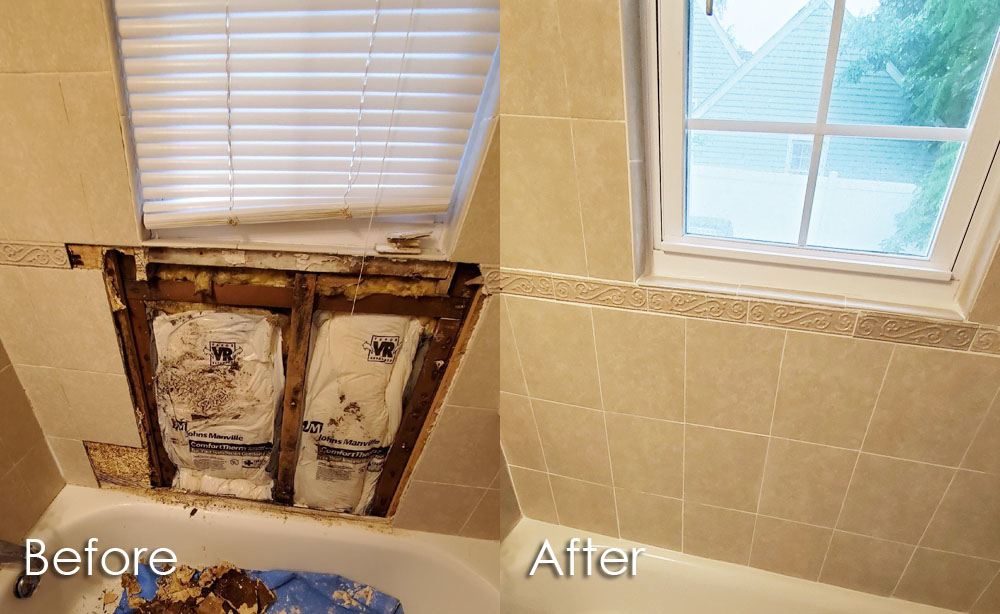Do you find yourself interested in additional info about How to Prevent Bathroom Water Damage?

The washroom is extremely prone for wet accumulation as well as possible water damages due to the regular use water in it. This write-up offers simple evaluation methods to assist finding water damages threats.
The frequent use of water in the restroom makes it very prone for wet buildup and potential water damage. By examining it frequently, you can minimize water relevant problems.
The complying with collection of inspections is simple to execute as well as need to be done as soon as in every 3 months in order to maintain your bathroom in good shape and to prevent potential water damages triggered by the tub, the shower, pipe joints as well as plumbing, sinks, cupboards, as well as the bathroom
Do not disregard doing these examinations as well as be complete while doing them. Bear in mind that these basic evaluations can save you a lot of money by offering early indications for water damage
Bath tub and also Shower
The shower and also bath tub need unique interest as well as maintenance. Check the tiles and also replace if fractured. See to it that there is no missing out on cement between the ceramic tiles. Inspect and change fractured caulking at joints where the wall surfaces satisfy the floor or the bathtub. Obstructed drains and pipelines troubles will certainly avoid the bathtub from drying and also might suggest major problems under the tub. Speak with a professional immediately to stop architectural damage. Pay attention to stainings or soft locations around the bathtub wall surfaces as they might suggest an internal leakage.
Plumbing
Signs for water damage are hard to identify considering that many pipes are mounted inside the walls.
Pay special focus to flooring and wall surfaces moisture and also spots as they may show an undetectable plumbing problem. Examine wetness degrees in adjacent rooms too.
Sinks as well as Cabinets
Sinks and closets are subjected to dampness as well as humidity everyday and are usually neglected. Inspect on a regular basis under the sink and on the kitchen counter above it. Fix any type of drip in the catch as it may recommend drain troubles. Take a look around the sink, slow-moving draining pipes might indicate an obstructed drain. Change sink seals if they are cracked or loosened.
The Toilet
The bathroom is a vulnerable water junction. Examine the water lines and look for leaks around the bathroom seat, in the hose, as well as under the water container. If you discover any type of indicators of moisture on the floor around the bathroom, look for leaks in the toilet rim as well as container seals.
Be aware that hanging toilet bowl antiperspirants raises the opportunities for clogs.
Water Damage Signs In The Bathroom To Avoid Cleanup
Musty smell
This is one of the easiest signs to catch because musty smells are so odorous. The damp, earthy, moldy smell should be a big red flag. The smell will develop when moisture gets trapped in surfaces, and begins to facilitate mold growth. Leaking pipes under cabinets, inside walls, and behind shower fixtures will cause moisture to stay trapped and not dry, which will lead to mold growth and spread. As soon as you notice any musty smells in your bathroom, have it checked for hidden water damage and cleanup signs.
Visible mold
If the smell isn’t there to give it away, sometimes you will actually see mold growth. Finding mold in your bathroom is a serious problem, because mold is very harmful to your health. By the time mold growth is visible, it also means that water damage has already occurred and been present for some time. The only way the mold problem can be resolved is to find the source of the moisture and get it stopped. To safely and adequately remove mold, you need to have professionals handle the remediation. Do not waste any time in getting mold problems addressed, fixed, and sanitized so that you can protect you and your family from the many respiratory symptoms caused by mold exposure.
Damaged floors
Bathroom floors should be able to withstand some exposure to water while still remaining in good condition. However, when excess exposure or water leaks occur, they will begin to damage even the most water-resistant flooring. If you notice any cracking, bubbling, staining, or warping on your bathroom floors, there is probably a water leak somewhere causing the distortion. If you notice areas of the floor have become softer, or even have a spongy feeling, there is probably damage to the subfloor. Subflooring is typically made up of plywood. When plywood is exposed to water or moisture, it will absorb it. Once it has become saturated, the weight of the excess water will cause the wood to swell and soften. Check the floors in your bathroom frequently to catch any of these sings before they lead to damaged subflooring.
Changes on walls
When water leaks behind walls, it will cause changes in the drywall. Peeling plaster, blistering paint, and soggy wallpaper are all good indicators that excess water is building up behind the wall. Water leaking behind drywall will cause it to swell and be soft to the tough. If you start to notice gaps along the trim of your walls, or where tile meets the wall, it could also be a strong indicator that there is a leak behind the wall. Any changes, distortion, or damage on the walls should be evaluated as soon as you notice it to prevent further water damage and cleanup.

I ran across that blog entry on Common Causes of Water Damage in a Bathroom when doing a lookup on the web. Liked our post? Please share it. Help other people check it out. We recognize the value of reading our article about Common Causes of Water Damage in a Bathroom.
Phone